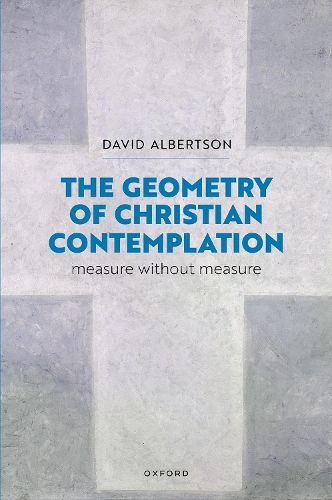Readings Newsletter
Become a Readings Member to make your shopping experience even easier.
Sign in or sign up for free!
You’re not far away from qualifying for FREE standard shipping within Australia
You’ve qualified for FREE standard shipping within Australia
The cart is loading…






The writings of ancient and medieval Christian mystics were rediscovered in the twentieth century, and today they are read more widely than ever before. But do modern assumptions about religious experience influence how we hear those premodern voices? Do we do them justice by thinking of mysticism as interior and ineffable? Or can mystical experience intersect with the natural environment, and indeed the cosmos, which science calculates with precise quantities? David Albertson's The Geometry of Christian Contemplation: Measure without Measure suggests a fresh approach to the history of mystical theology that is oriented toward exteriority more than interiority, and toward the measurable world outside more than the invisible world within. The ancient Greek philosopher Plotinus had taught contemplatives to close their eyes and withdraw into the soul. Most Christians followed his directions, but others dissented. In three critical episodes, an alternative model of Christian contemplation began to emerge: from Dionysius the Areopagite, to the Byzantine monks John of Damascus and Theodore the Studite, to eccentric humanists in medieval Paris. Together these episodes add up to a very different theological aesthetics, one that can enliven the modern study of mysticism and correct some of its imbalances. For in the centuries before the scientific revolution and the secularization of nature, Christians still saw God in the exterior world, not only the interior soul. God was not an ineffable and formless Absolute, immeasurable as the soul, but an infinite Measure who leaves behind geometrical traces in the figures of the world. The God who became a human body in the Incarnation not only entered time and matter, but also spatial extension, and with it the conditions of measure: points, lines, curves, shapes, planes, dimensions, and magnitudes. Today the wisdom of this counter-tradition can strengthen the study of mysticism, not only by supplementing our contemporary fascination with negative theology by redefining what it means to name God positively, but by suggesting a new connection between Christian mysticism and the hyper-measured, hyper-technologized world that surrounds us.
$9.00 standard shipping within Australia
FREE standard shipping within Australia for orders over $100.00
Express & International shipping calculated at checkout
The writings of ancient and medieval Christian mystics were rediscovered in the twentieth century, and today they are read more widely than ever before. But do modern assumptions about religious experience influence how we hear those premodern voices? Do we do them justice by thinking of mysticism as interior and ineffable? Or can mystical experience intersect with the natural environment, and indeed the cosmos, which science calculates with precise quantities? David Albertson's The Geometry of Christian Contemplation: Measure without Measure suggests a fresh approach to the history of mystical theology that is oriented toward exteriority more than interiority, and toward the measurable world outside more than the invisible world within. The ancient Greek philosopher Plotinus had taught contemplatives to close their eyes and withdraw into the soul. Most Christians followed his directions, but others dissented. In three critical episodes, an alternative model of Christian contemplation began to emerge: from Dionysius the Areopagite, to the Byzantine monks John of Damascus and Theodore the Studite, to eccentric humanists in medieval Paris. Together these episodes add up to a very different theological aesthetics, one that can enliven the modern study of mysticism and correct some of its imbalances. For in the centuries before the scientific revolution and the secularization of nature, Christians still saw God in the exterior world, not only the interior soul. God was not an ineffable and formless Absolute, immeasurable as the soul, but an infinite Measure who leaves behind geometrical traces in the figures of the world. The God who became a human body in the Incarnation not only entered time and matter, but also spatial extension, and with it the conditions of measure: points, lines, curves, shapes, planes, dimensions, and magnitudes. Today the wisdom of this counter-tradition can strengthen the study of mysticism, not only by supplementing our contemporary fascination with negative theology by redefining what it means to name God positively, but by suggesting a new connection between Christian mysticism and the hyper-measured, hyper-technologized world that surrounds us.